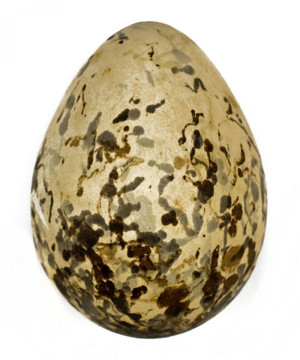Rare Jerdon’s Courser Egg Found, ‘Only Known Egg In The World’ Of Endangered Bird Species [PHOTO]

The only known egg of an endangered bird from India has been discovered, and it might help save the species.
The egg belongs to the Jerdon’s Courser, a critically endangered species that lives on a small area of land in southern India. Though it was discovered in the 1900s, the egg only recently turned up in a drawer, much to the delight of Dr. Alan Knox, Aberdeen University’s Emeritus Head of Museums, the BBC reports.
“I was looking through drawers of uncatalogued eggs in the university’s zoology museum when I spotted an egg labeled as belonging to this species,” said Knox. “It was one of those eureka moments – finding something nobody else knows about, something so rare and exciting. I could hardly believe my eyes.”
Identifying the "only known egg in the world" belonging to the Jerdon’s Courser was a challenge. The rare egg was first compared to others in a larger U.K. collection, then its DNA was compared to samples taken from the toe of a 140-year-old Jerdon’s Courser skin.
“It is extremely challenging to get DNA out of eggs from museum collections, but highly rewarding when it identifies something so very rare within our own museum.” Professor Stuart Piertney of Aberdeen University’s Institute of Biological and Environmental Sciences said in a statement.
The egg, which belongs to a collection acquired by Aberdeen University in the 1970s and remained untouched for 30 years, may lead to conservation efforts to save the rare bird.
“We are hoping the discovery will help conservationists working to save the species in India,” Knox said. “They will now know what the eggs look like, and there is a possibility the species may still exist in scrub-jungle nearer to the Kolar Gold Fields.”
The Jerdon’s Courser, whose habitat is severely threatened by human settlers, agriculture, grazing and quarrying, has had a declining population for years. The International Union for Conservation of Nature and Natural Resources (IUCN) estimates there are anywhere between 70 to 400 birds alive today.
“Very little is actually known about this extremely rare bird, which inhabits an area only a few kilometers wide,” Knox said. “It was seen only a few times in southern India before it was presumed extinct around 1900. It was rediscovered in 1986 but is listed as a critically endangered species.”
© Copyright IBTimes 2025. All rights reserved.




















